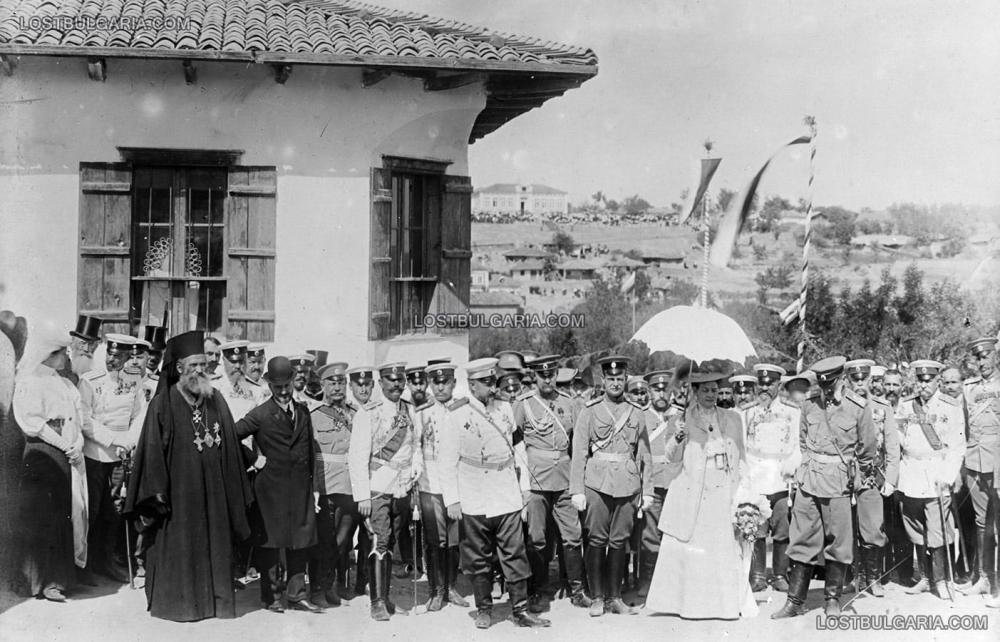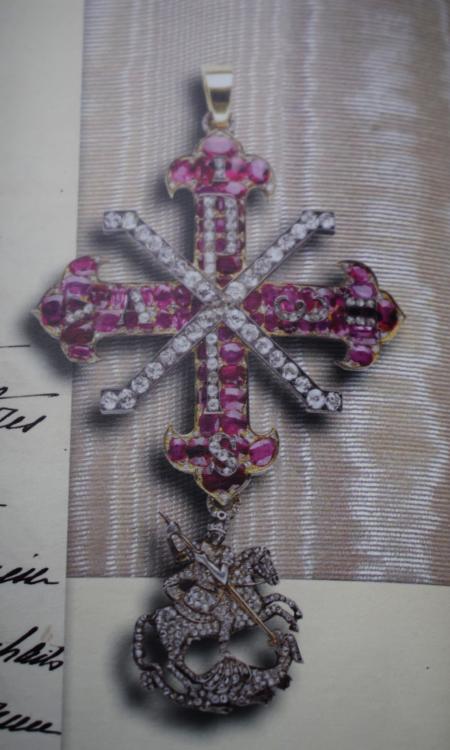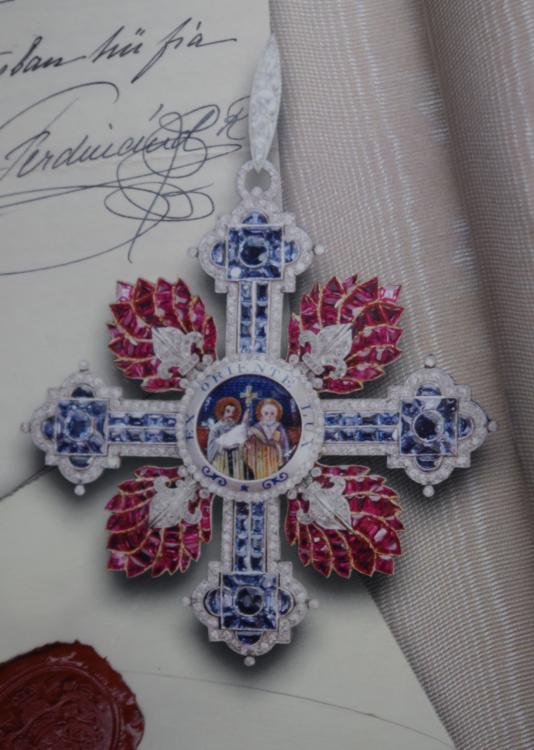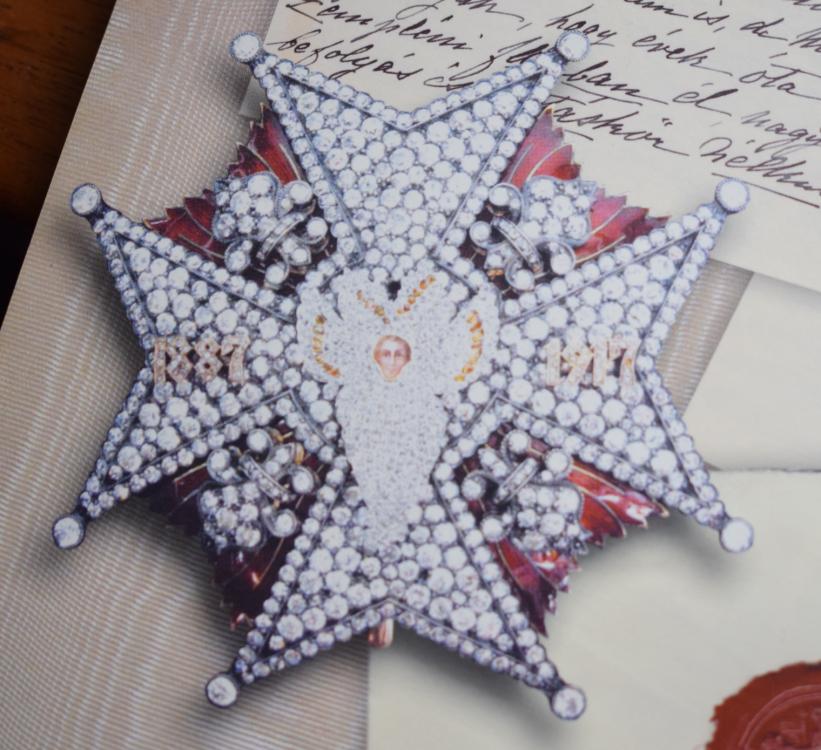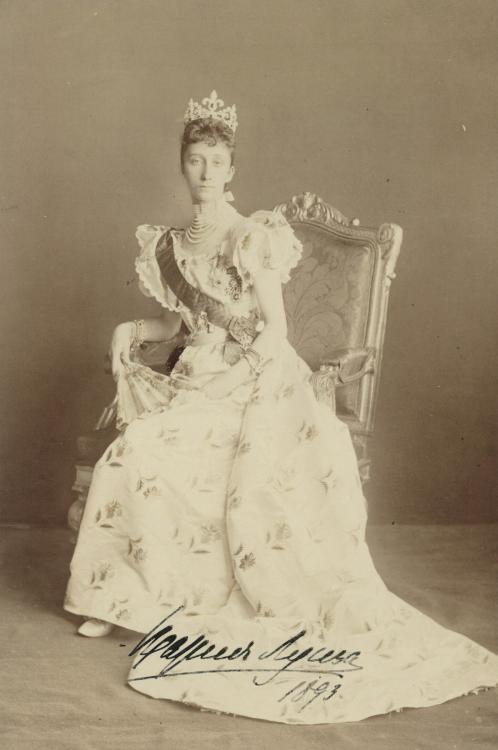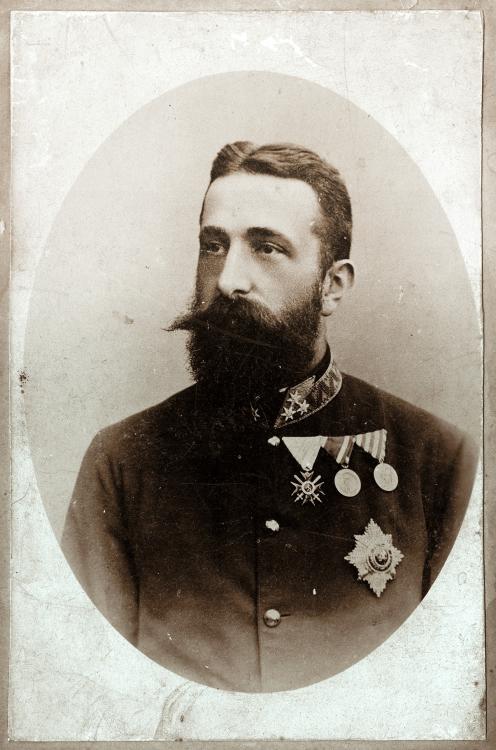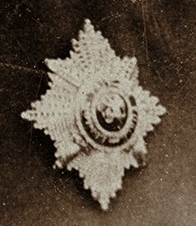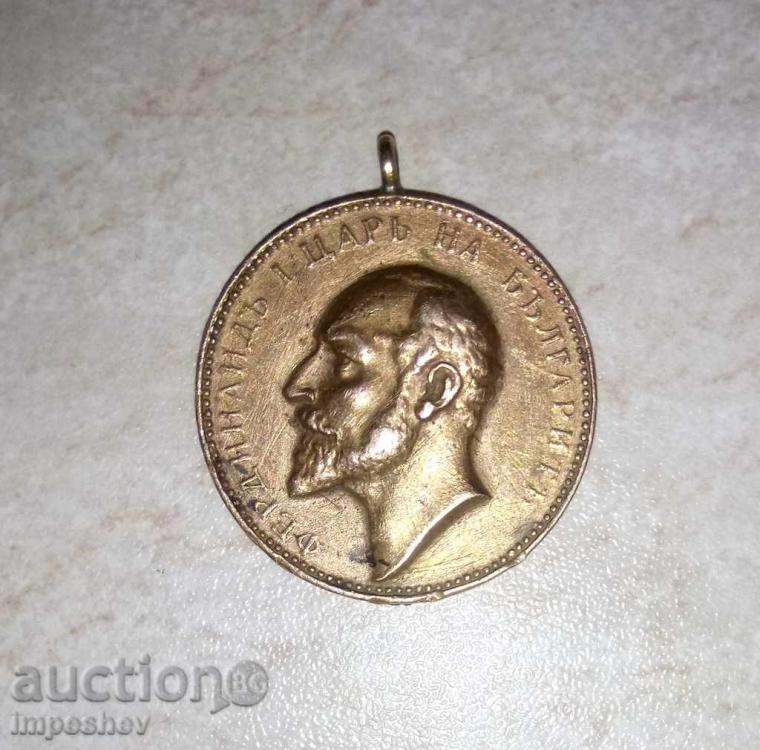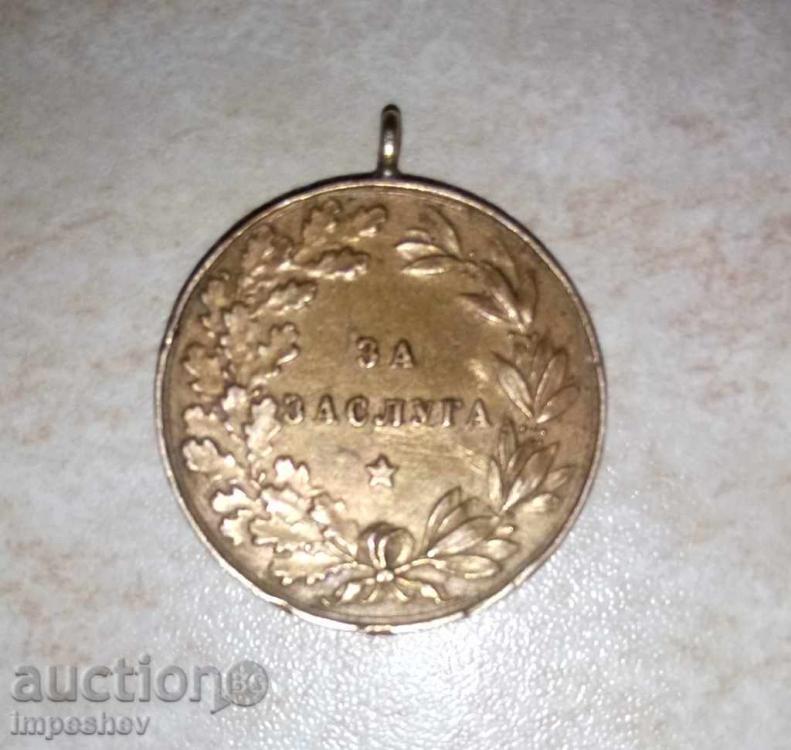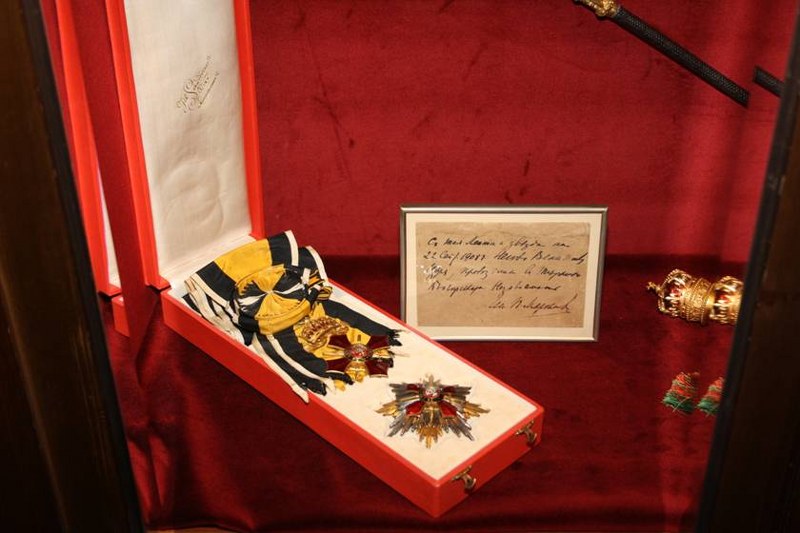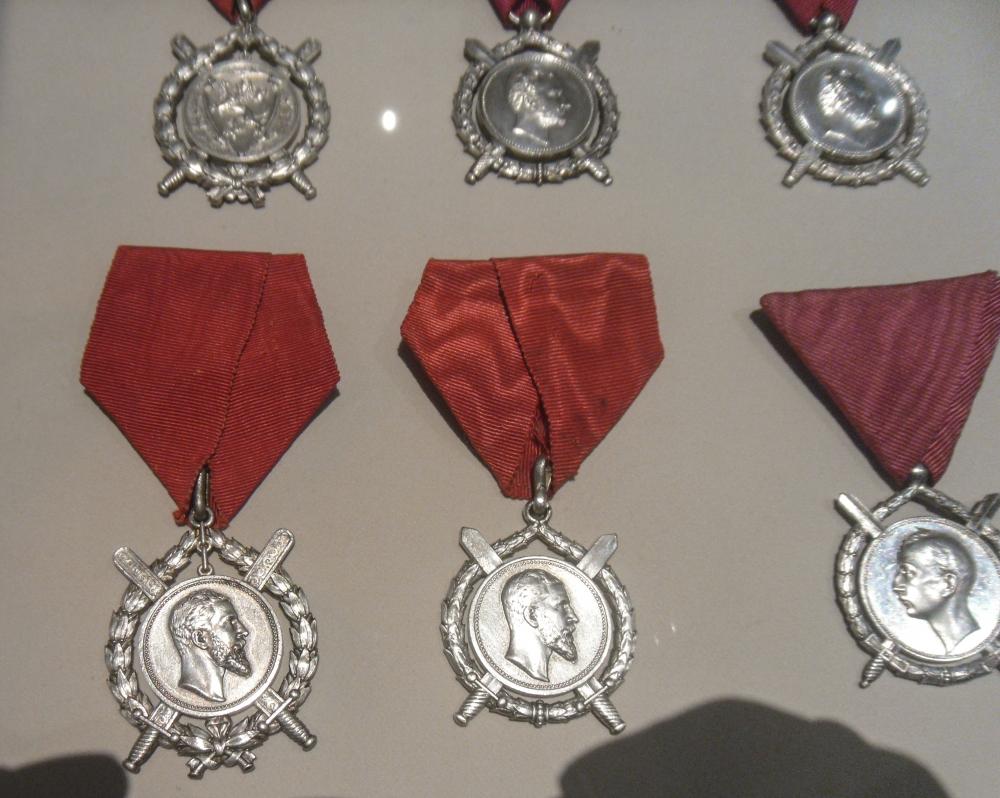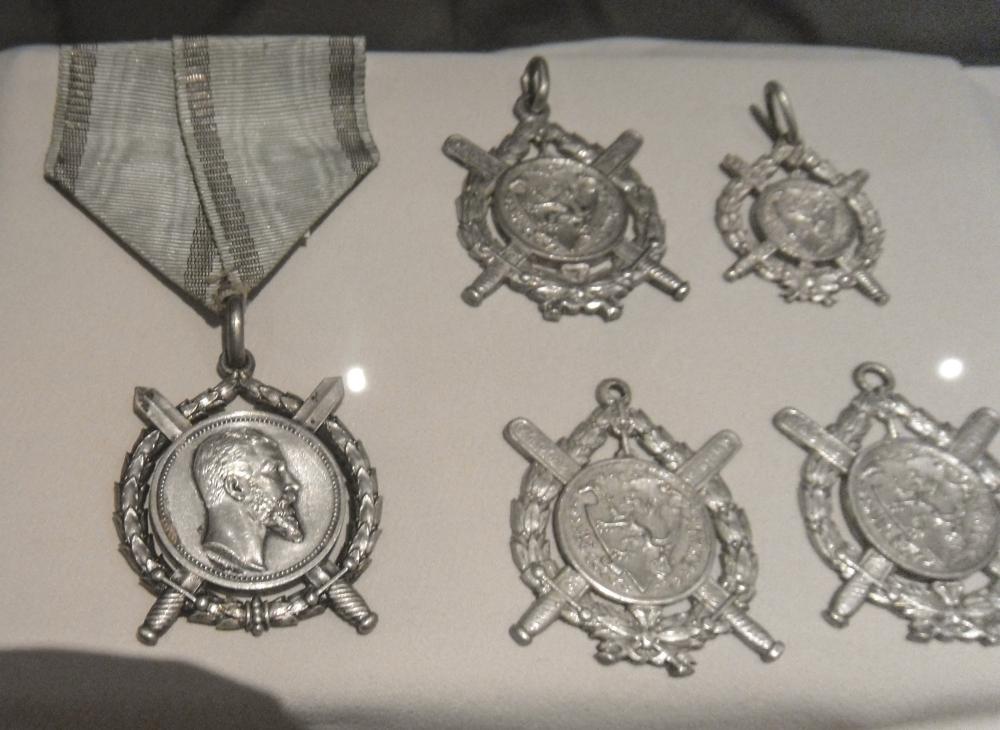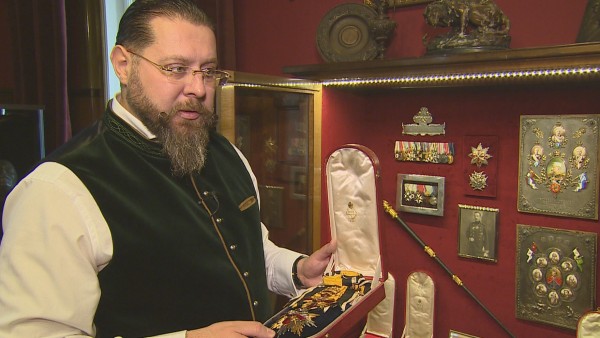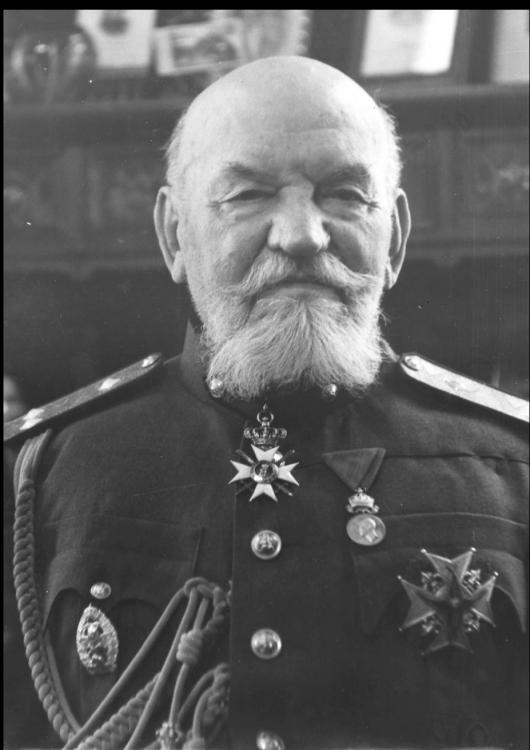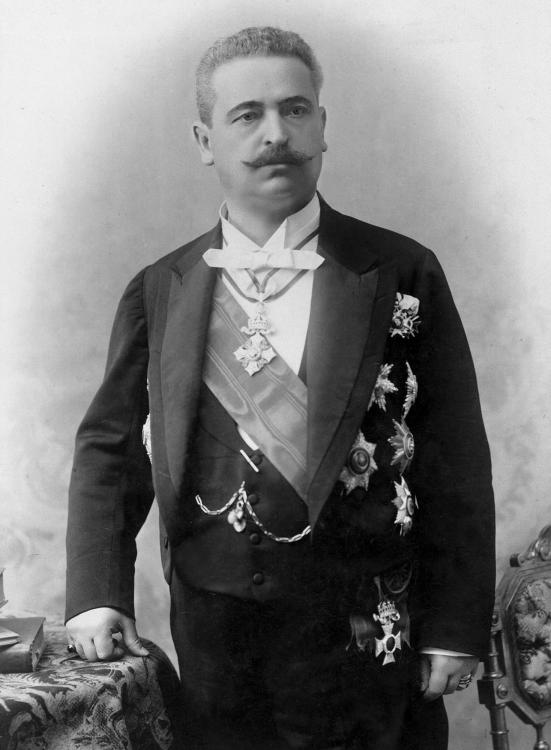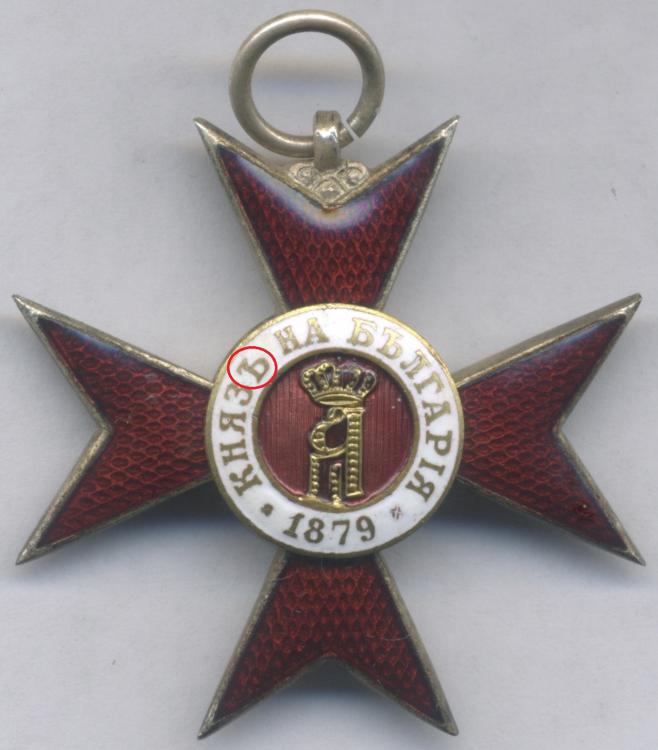-
Posts
232 -
Joined
-
Last visited
Content Type
Profiles
Forums
Blogs
Gallery
Events
Store
Everything posted by ilieff
-

King Ferdinand I's decorations
ilieff replied to ilieff's topic in Central & Eastern European States
The Maltese cross on the below picture (circled). It's the same as shown on the uniform from post 27 in this thread. -

Bulgarian St Alexander Grand Cross badge?
ilieff replied to Alpha Draconis's topic in Central & Eastern European States
Your cross should have been gilded, too. I assume the golden layer has worn off with time. All classes except 5th and 6th had gilt. -

Interesting photographs of decorated people
ilieff replied to ilieff's topic in Central & Eastern European States
Here's another one: This is how some Bulgarian priests used to wear their medals - suspended at the neck -

Bulgarian St Alexander Grand Cross badge?
ilieff replied to Alpha Draconis's topic in Central & Eastern European States
Guys, I think there's no disagreement here. I did say that 'there was no Grand Cross class before the Independence' - I merely tried to point out that often the term 'Grand cross' was being misused for the 1st class even by officials and especially by foreigners (westerners in particular) for whom any decoration worn on a sash over the shoulder was a Grand Cross/Grand Cordon. I believe that this might be the main reason for the introduction of the Grand cross - the attempt to modernize and align the decorations system with the European (i.e. not Russian) standards and not the newly declared Independence. In regard to the change of the crown - Prince Romanoff even points out that the change was initiated in 1891 (assuming he means the 1st change in the Civil merit order). In the period of 1891-1910 there has been a number of changes in the design of the crown and perhaps in this transitional period there were also limited numbers of the new style crows being awarded with the Alexander order, too. Certainly the higher classes were, at least. However, this contradicts the general understanding that these were only awarded after 1908. Here's an image of 1907. The bishop on the left wears a (what appears to be) generic non-jewelled grand officer cross with flat top crown. I haven't been searching for such images in particular but I will try to find some more because it's an interesting topic. Lastly, about the size of the collar badge - not too sure which of the info I read is correct, but I assume that perhaps none of it was, as the quoted numbers varied from 39 to 55 mm. My understanding is that the necklace was given in addition to a Grand Cross/ I class badge, so it makes sense (just like other orders) to have a similar badge attached to it (i.e. 55mm). Thanks -

King Ferdinand I's decorations
ilieff replied to ilieff's topic in Central & Eastern European States
Very nice! Here are images of the orders you are enquiring. Unfortunately, I cannot say why the King decided to use a Bulgarian crown (if it is at all) between a foreign award and its chain. Perhaps the original crown wasn't jewelled, so was replaced with a jewelled one - or perhaps there wasn't a crown at all and it was added in. It's hard to read King Ferdinand's mind - He has worn so many unique awards and combinations that it's impossible to keep track all of them. Similar is the case with his Legion d'honneur - as we know, He's been presented with a generic set (sold recently, I believe) but there is a photo of Him wearing an enamelled star from the Monarchy period instead. I am not too sure if that would be acceptable for the French republic, but these are the facts. Yes - the jewelled St.St. Cyril and Methodius set - it is unique indeed, produced for the 30th anniversary of His reign, thus the star bears the corresponding years inscribed. King Simeon II has also worn this star on several occasions. Pictures do exist, too. Please note that the jewelled badge which is on online sale is not the one which belonged to the King. The scans I provide are from Schalafoff's book, but they are also depicted in the earlier Prince Romanoff's book, where we can also see other variations of this high decorations, including enlarged breast stars (100mm). Lastly, so far the only two decorations which I couldn't identify are the one Robert enquired and another Maltese-shaped cross of very crude shape, worn on most of the King's uniforms during ww1 (I showed a photo somewhere in the thread earlier). I am not too sure if the former is the Tuscan order, as suggested above, because it is clear that the enamel is white (or of very light colour), rather than red. I am prone to think that it's just a strangely designed Maltese order but I cannot find evidence or logic in this direction (yes, it does make sense for this to be an Italian-related award). Thanks, -

Bulgarian St Alexander Grand Cross badge?
ilieff replied to Alpha Draconis's topic in Central & Eastern European States
Hi new world, The introduction of the flat-top crown after the Independence of 1908 is a myth. 'Tsar' crown, as some call it, have been around for quite some time before 1908 and the proclamation of the Tsardom/Kingdom is (should) only used as a very general milestone in the history of the order. Here are a couple of images which prove that flat-top crowns were used well before this: The Princess-consort wearing a diamond order with new type of crown (dated 1893) Gen. Markov wearing a 2nd/3rd class with new type of crown on the very date of the proclamation of the Independence There are also images of other people wearing such orders well before 1908. My second point: I do not want to prove that there was a grand cross prior to 1908/1909 - I am just pointing out that the terms 1 class and grand cross were being used interchangeably (both officially and unofficially) ever since the foundation of the order - by the way, this is proven by a thread you posted last month - the Statute of the Order from 1896 where it clearly says "1 classe = Grand 'Croix". Thanks, Ilieff -

Bulgarian St Alexander Grand Cross badge?
ilieff replied to Alpha Draconis's topic in Central & Eastern European States
Hi, I don't think it really matters whether it's 54, 55 or 56 mm, as long at it's not more or less than that. I think there have been samples of 56mm in size too. It has to do with the fact that sometimes a) the hand-crafting/polishing/gilding takes more material off the base of the cross, thus the size decreases or inscreased; OR b) people who measure these did not use well-calibrated tools, thus the result is slightly off (nothing personal here). As for the Collar - I don't think the badge differs. It should be a generic GrandCross/I class badge just attached to a chain instead. Please correct me if I am wrong. And by the way, the central medallion of the obverse is rotated 180 (or so) degrees. If you feel confident enough, you can try to rotate it to its correct position. Thanks -

King Ferdinand I's decorations
ilieff replied to ilieff's topic in Central & Eastern European States
Hi Robert, These are: the Order of Danilo (5th class) and the Saxe-Ernestine house order (1st class Knights cross) -

Bulgarian St Alexander Grand Cross badge?
ilieff replied to Alpha Draconis's topic in Central & Eastern European States
Hi Joseph, Short answer: This cannot be determined, unless you trace back the original document/story or at least a date of decoration. Long answer: It's a bit like the Schrödinger's cat paradox - the cross is currently both a Grand cross and 1st Class and you wouldn't be able to tell, unless you find solid evidence of it being either of the two. We had a discussion about this earlier this year when some people considered that the two grades are completely different (and they are to some extent) but after the so called introduction of the Grand cross, the size and appearance remained the same, thus, the only difference between the pre- and post-conversion orders was simply the wording used to describe them. Of course, there was this new green 1st class which was introduced but it wasn't meant to be a substitution for the old 1st class. My personal opinion is that the old 1st class (white) ranks above the new 1st class (green) and perhaps equal or near-to-equal to the new Grand cross (if they can be matched at all). In addition, I believe that people of the late XIX century had the same dilemma, as in official documents, we can see the top grade of the order being described as both 'I class' and 'Grand croix' on different occasions - just to add to the confusion. Personal opinion: You can call it Grand cross/I class, if that's acceptable for you. At the end of the day, the main thing which matters is the fact that regardless of the exact time of decoration, it was the top grade of the order at the time. Ilieff -
Hi all, I thought we need a separate thread for interesting photographs and portraits, rather than putting such images in between discussions of other threads. I hope you'd agree. Here's the first one: Prince Alexander I of Bulgaria (probably photographed after his abdication) wearing a modest set of three decorations on his chest: bravery order (4th class) - interesting example - perhaps one of those mythical French-made ones (due to the swords) Voluntary corps medal of 1881- interesting because the Prince wasn't really eligible to be decorated with it but apparently he was medal for the war with Serbia (1886) - not sure whether this is indeed this particular medal (could be something foreign). This fact poses the question whether the Prince received a 'replacement' 2nd type medal (like the rest) or stuck with the 1st type. The answer to this question would perhaps solve the myth of the 'ribbon of different colour' for the 1st type. and The star - Order of Leopold with swords (not that interesting but very untypical), though at first glance I took it for a Bravery order star Thanks Ilieff
-

Bulgaria FAKE BULGARIAN ORDERS ON THE MARKET
ilieff replied to Graf's topic in Central & Eastern European States
Now for a sudden change in topic from the highest award to [perhaps] the lowest: It looks as if fakers are now trying to fake even the cheapest of medals - bronze medals of merit. I find this pathetic. -

Bulgarian Order of St Alexander - Statute 1896
ilieff replied to new world's topic in Central & Eastern European States
Very nice. I`m still trying to find a copy of this, in order to make it available on my website. -

Bulgaria Medal for Merit and Order for Merit
ilieff replied to Graf's topic in Central & Eastern European States
Are you sure that these are not photographs of the same medal? The ribbons look identical and this can hardly be achieved as these are hand-stitched. The photograph Igor posted is from the archives of the website, so it's older than [perhaps] 10 years - it might be your medal prior to you purchasing it. -

Bulgaria Medal for Merit and Order for Merit
ilieff replied to Graf's topic in Central & Eastern European States
I cannot quote any figures, but certainly not that many were decorated. This is one of the rarest emissions in general, and I have only seen photographs of 5 or 6 medals (both bronze and silver) in total. We are still waiting for a 'golden' medal of this issue to be discovered (in case it existed at all). -

Bulgaria Medal for Merit and Order for Merit
ilieff replied to Graf's topic in Central & Eastern European States
Yankee, is this your medal? It's a very rare one indeed. I haven't seen such an example in person but by the photos I came across, all the silver medals of this type are really worn out and/or with lots of patina on them. This makes me think that the material is not pure silver (if silver at all). Are you able to prove this? Are there any markings on the medal? -

King Ferdinand I's decorations
ilieff replied to ilieff's topic in Central & Eastern European States
-

Bulgaria Medal for Merit and Order for Merit
ilieff replied to Graf's topic in Central & Eastern European States
Hi, Igor. Here are two of the images I've taken at the museum. I'd suggest we stick to the topic though (which is the medal, not the order). PS: If you're asking about 'golden' Orders of merit - I don't think they have any on display at the museum. I might be wrong though. -

King Ferdinand I's decorations
ilieff replied to ilieff's topic in Central & Eastern European States
Hi, I haven't seen the set, no. Here's another photograph from the website of the Vrana museum itself - this time the box which is on display is a Schwerdtner box without a rounded side (and Gen. Markov's note framed on the side). This is unusual - I cannot really tell which one is the original box for the set (if any of them at all), though, I assume, the emission of the order itself would be the 1st one - with the slightly darker green enamel which would probably suggest Schwerdtner indeed. I think we partially covered this topic earlier in the thread. There is a picture of two of Ferdinand's bars on my website, too. -

King Ferdinand I's decorations
ilieff replied to ilieff's topic in Central & Eastern European States
The set is kept at the Vrana museum, as far as I know. Here's a photograph of the director, holding the etui of the set. It's an interesting story actually. The order was originally worn by General Markov (Ferdinand's adjutant at that time) on 22nd September 1908. The Prince, Gen. Markov and Prime-minister Malinov were travelling in the train to Tarnovo when they received the news, urging them to act quickly and announce the Independence on the same day. Due to the lack of any other high orders at hand, Ferdinand takes off Markov's order and declares the Bulgarian Independence wearing it. In the 1920s, General Markov sends back as a present the very same original set to King Boris in Sofia with a note, describing in detail the fate of this historical order set. -

Bulgaria Medal for Merit and Order for Merit
ilieff replied to Graf's topic in Central & Eastern European States
-

Bulgaria Bulgaria military Order For Bravery 1879 model
ilieff replied to Yankee's topic in Central & Eastern European States
Thanks. Presumably, Stoilov has been decorated with the Bravery order in late 1885 or in first half of 1886, i.e. a year prior to him becoming a PM. This suggests that it was Alexander I who awarded it. Actually, they were very close with Him - some historians say 'nearly friends' (Stoilov being the chief secretary of His court). Yes, I think this diamond cross for the Prince's accession to the Throne is the sole example ever produced. Not even the Prince's mother - Clementine had the honour (like she usually did) of being presented with such a rare piece. My assumption is that it's a token of courtesy and gratitude due to the fact that it was Stoilov who received, evaluated and proposed Ferdinand's proposal for the Bulgarian Throne in 1887. And no, I don't think it's a privately made cross, firstly because this will upgrade the class of the cross (and this is done only upon the Monarch's good will), and secondly, Stoilov never spent money for shiny and unpractical things - this is clear by his detailed expense list which he kept for most of his life. -

Bulgaria Bulgaria military Order For Bravery 1879 model
ilieff replied to Yankee's topic in Central & Eastern European States
Hi guys, I wanted to share with you this photograph of Prime-minister Stoilov - one of the closest advisors to both Alexander I and Ferdinand I during the early years of New Bulgaria. Apart from 5 separate diamond decorations (St. Alexander 1st class set, 1st and 3rd class Civil merit, Osmanieh 1st class and the cross for Ferdinand's accession to the throne), please take a look at his order for bravery. It appears that he is wearing one of the above-mentioned [French made] examples of the 4th class. We know for a fact that he was decorated for his deeds as a platoon commander during the war with Serbia in 1885. This might suggest that these solid silver crosses were being awarded only to people of a higher status [presumably by the Monarch himself], as the generic crosses for this war were silvered bronze with a few solid silver examples far between, yet different to this elaborate cross. Also, it appears that the stock of this [presumably] first issue of the 4th class order has not been exhausted by 1886. What are your thoughts? -

Bulgaria Bulgarian Order for Bravery 1941
ilieff replied to Graf's topic in Central & Eastern European States
-

Bulgaria Bulgaria military Order For Bravery 1879 model
ilieff replied to Yankee's topic in Central & Eastern European States
Yankee, The recipient was Prince Alexander I The two badges you're enquiring are perhaps the Russian St. George and the Order of the Bath. -

Bulgarian Bravery order - early Austrian made
ilieff replied to new world's topic in Central & Eastern European States
Thank you, Igor. Indeed I can read 56*. As far as I know, Russian makers were usually putting their initials (e.g. "ИО" was for I.Ozeretskiy, etc). Unfortunately, I cannot recognise the letters in this case though. My assumption would be that it's "AK", which might stand for the company Keibel. Any thoughts?




